This post may contain affiliate links. Please read our disclosure policy.
This is the gluten free pie crust that changed everything.
Tender, flaky, easy to handle—and it rolls out like a dream. Whether you’re baking a classic fruit pie or a savory pot pie, this crust delivers all the flavor and texture you’ve missed.
With over 1,000 five-star reviews, it’s helped thousands of bakers rediscover the joy of homemade pie.
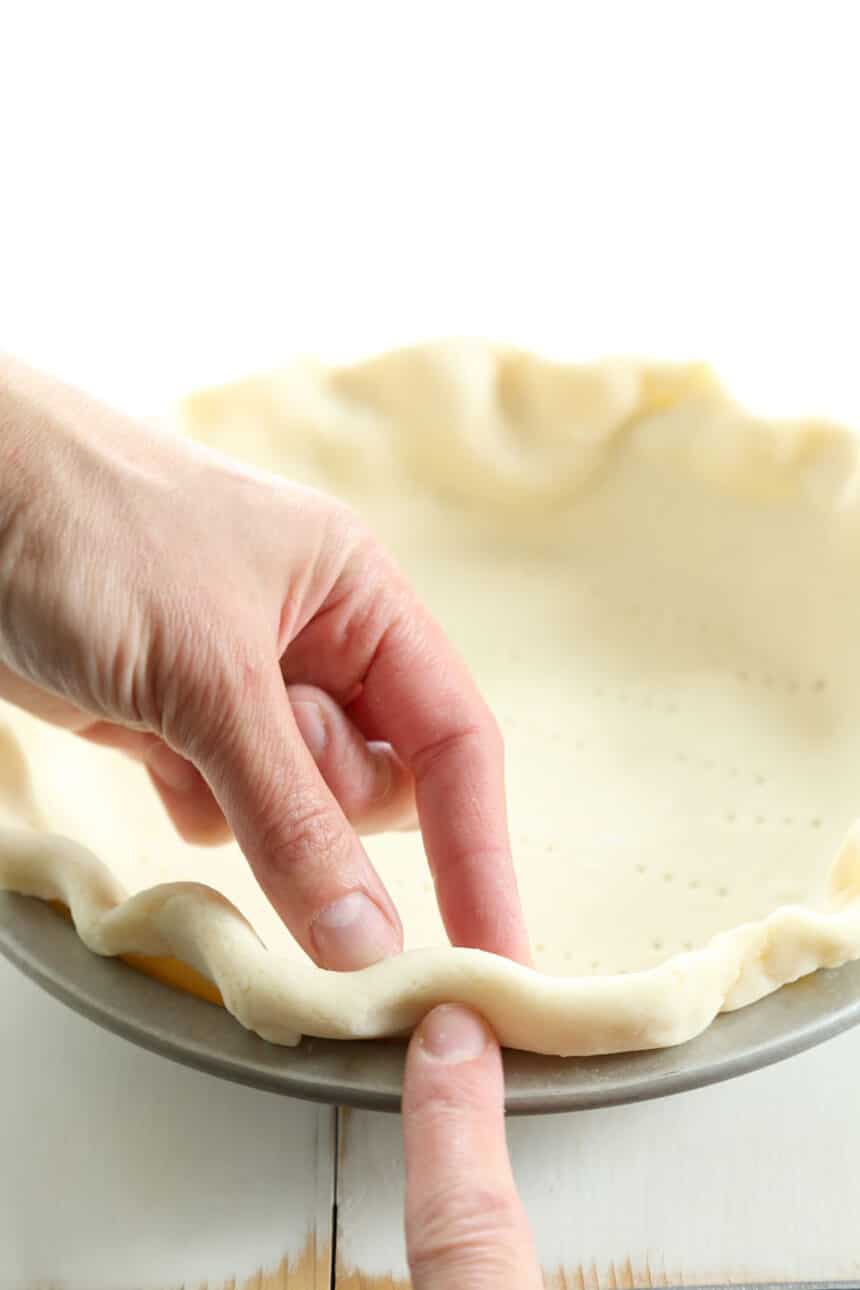
“This pie crust is an astonishing achievement. Nicole is able to unlock secrets I didn’t believe possible and I have found a love of baking because of it.”
“I have baked pies most of my life. … I thought those days of having anything with pie crust was over. I use this recipe for pies and chicken pot pies. … Thank you for such a wonderful recipe!”
my take
Nicole's Recipe Notes
- Flaky + tender: This crust rolls out easily, bakes up light and crisp, and never turns greasy or tough.
- Buttery + rich: Full of classic homemade flavor—nothing store-bought can match it.
- Simple to make: Just a bowl and spoon, no special equipment needed.
- Seriously versatile: Use it for sweet or savory pies. It holds up beautifully, even with juicy fillings.
What you'll need
Here are the 6 ingredients for this recipe, and a few words about each:
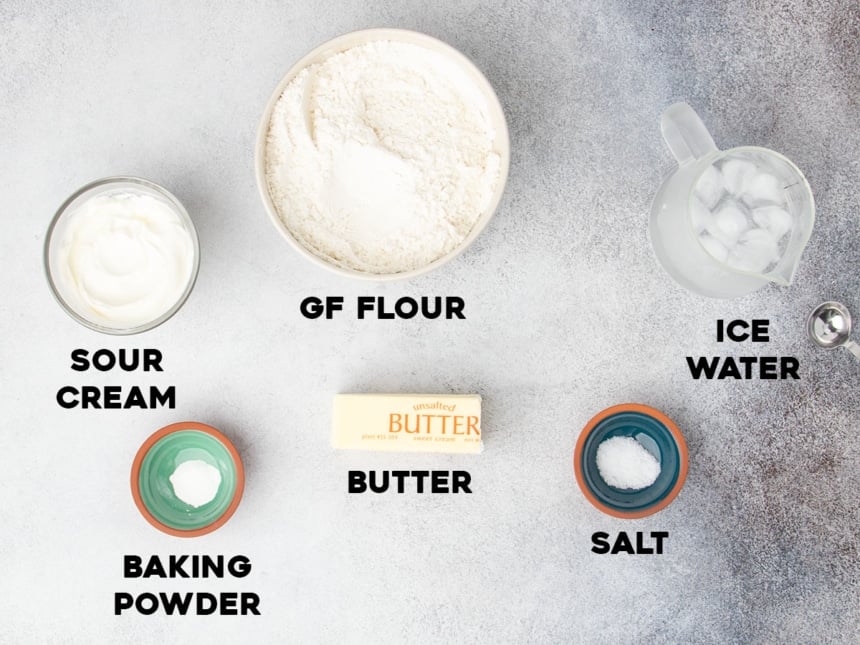
- Gluten free flour blend – Use a high-quality, balanced all purpose blend with finely ground rice flour. If yours is very starchy, you may need to add more water.
- Salt – For flavor and structure.
- Baking powder – Adds a touch of lift and tenderness.
- Unsalted butter – Cold, chopped butter creates flakiness and rich flavor as it melts during baking.
- Sour cream – Adds tenderness and depth of flavor without making the dough too wet.
- Ice water – Helps the dough come together without warming the butter. Use just the water—leave the ice behind.
How to make a flaky gluten free pie crust
Step 1: Make the dough
In a large bowl, whisk together your gluten free flour blend, xanthan gum (if needed), salt, and baking powder.
Add the cold, chopped butter and toss to coat. Flatten each piece between your thumb and forefinger to create flat shards of butter coated in flour.
Add the sour cream and mix until the dough starts to come together. If dry patches remain, drizzle in ice water a teaspoon at a time—just enough to moisten all the flour. The dough should be shaggy and clumpy, not sticky.
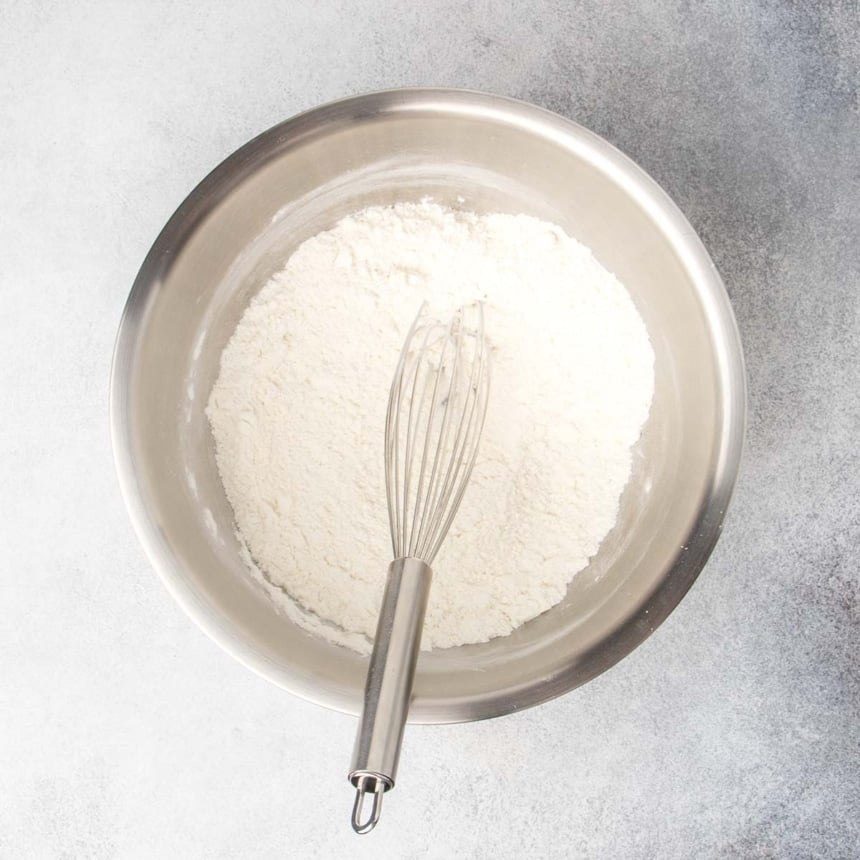
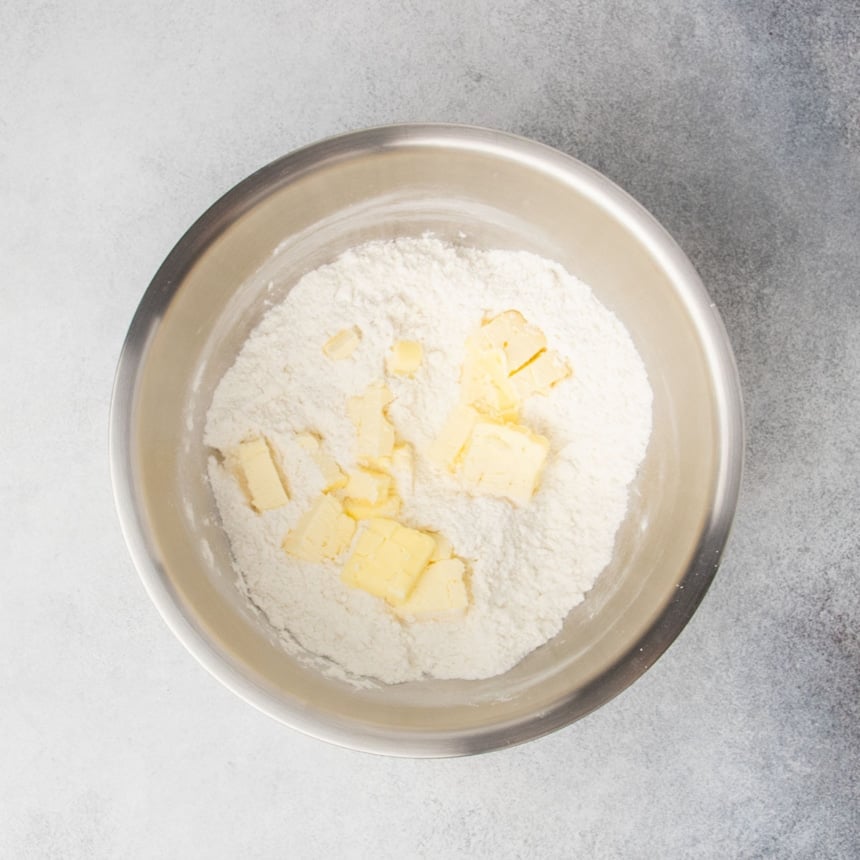
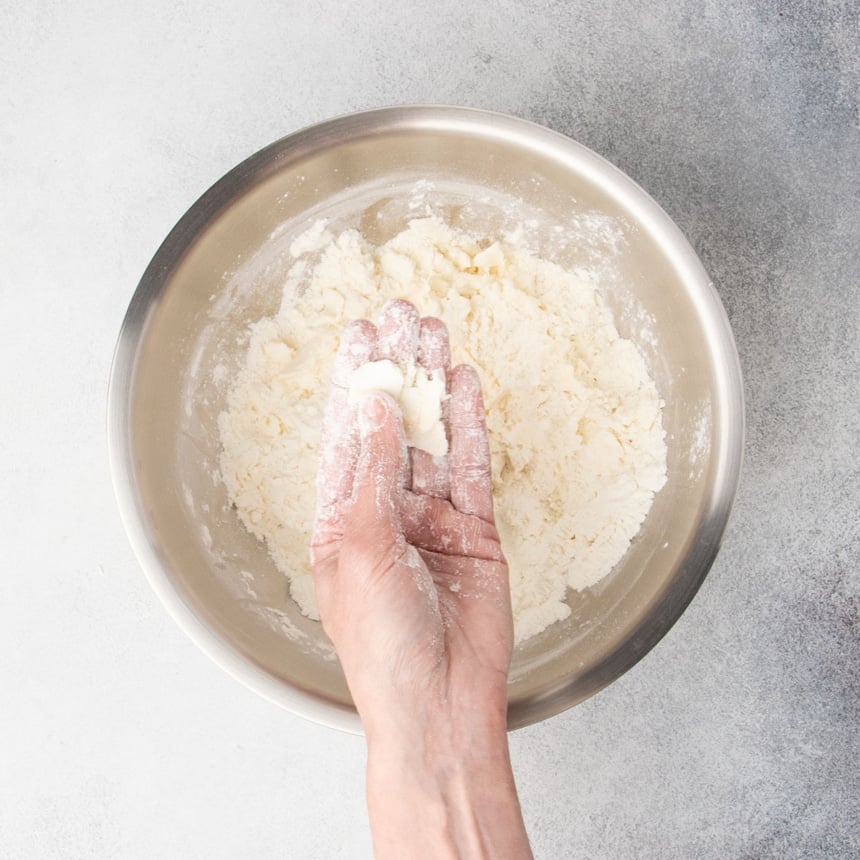
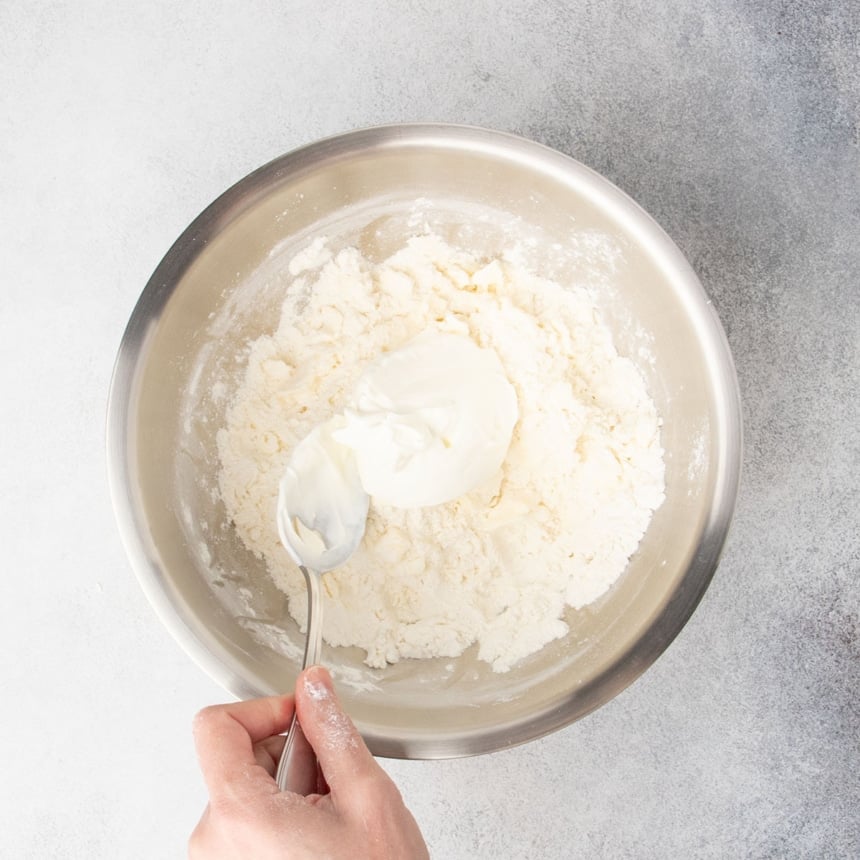
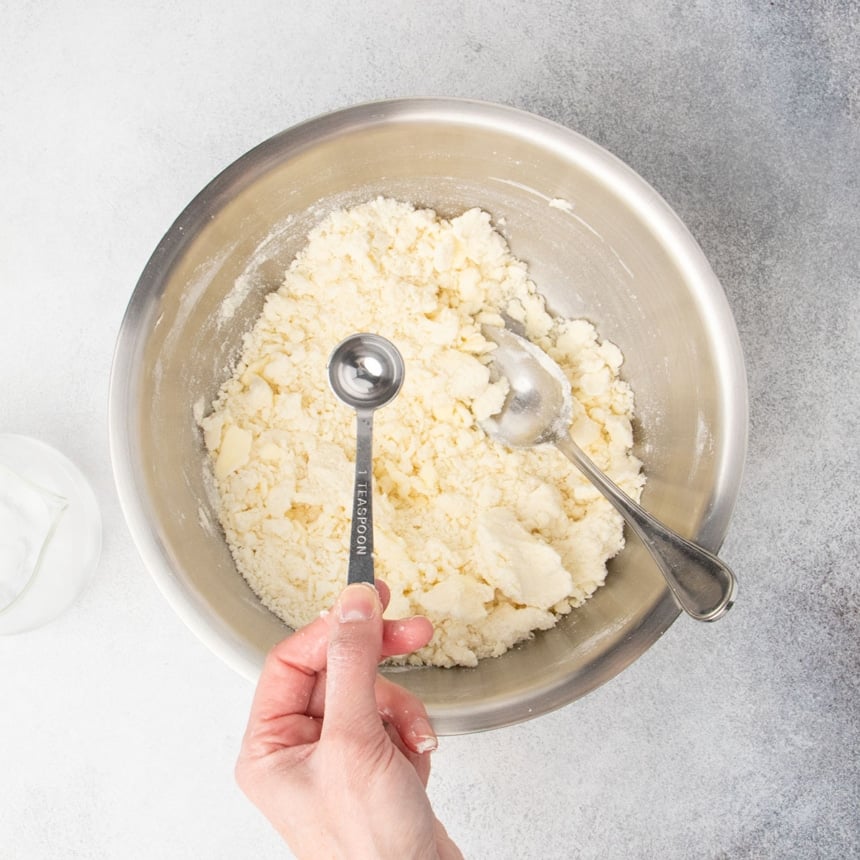
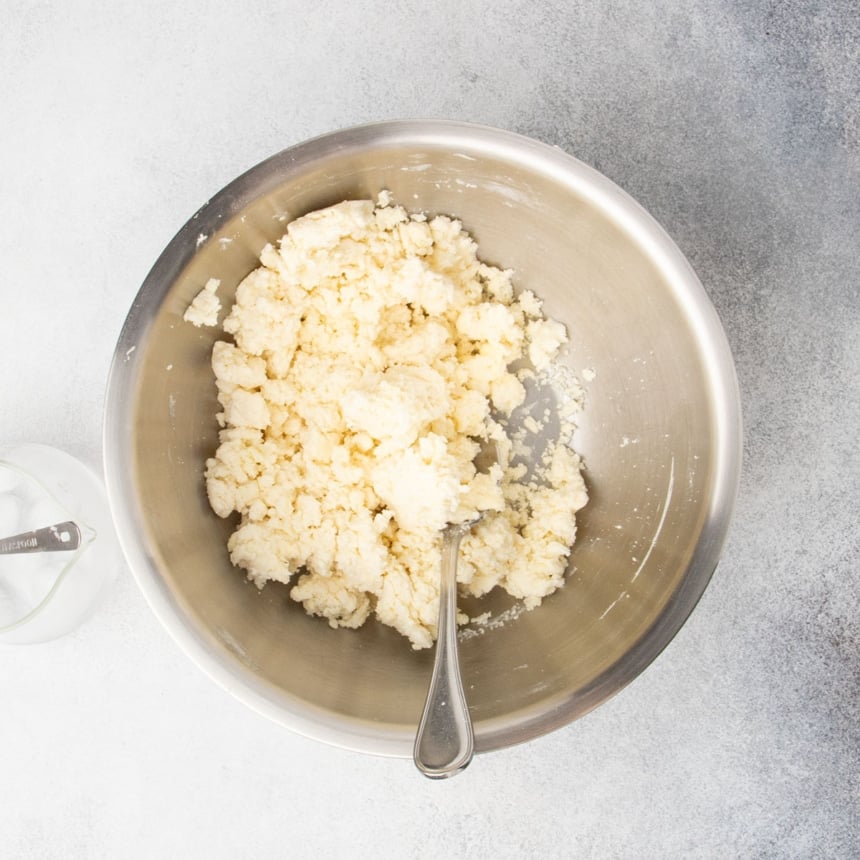
Step 2: Chill & Laminate the Dough
Turn the dough out onto plastic wrap, press into a rough disk, and wrap tightly. Chill for at least 30 minutes.
Once chilled, dust the dough lightly with flour and roll it into a rough rectangle. Fold it in thirds like a business letter, then roll and fold once more. Repeat once more for a total of 3 folds. Finally, fold the dough into a square, press to seal, and shape into a round disk.
If the butter starts to melt or the dough feels soft at any point, rewrap and chill again before continuing.
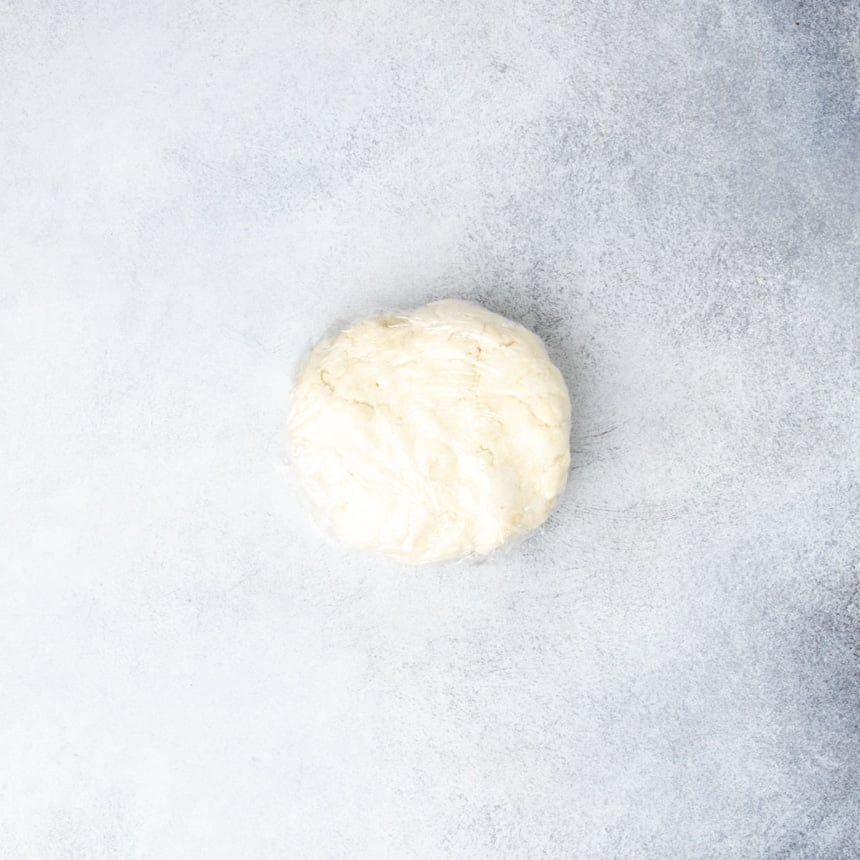
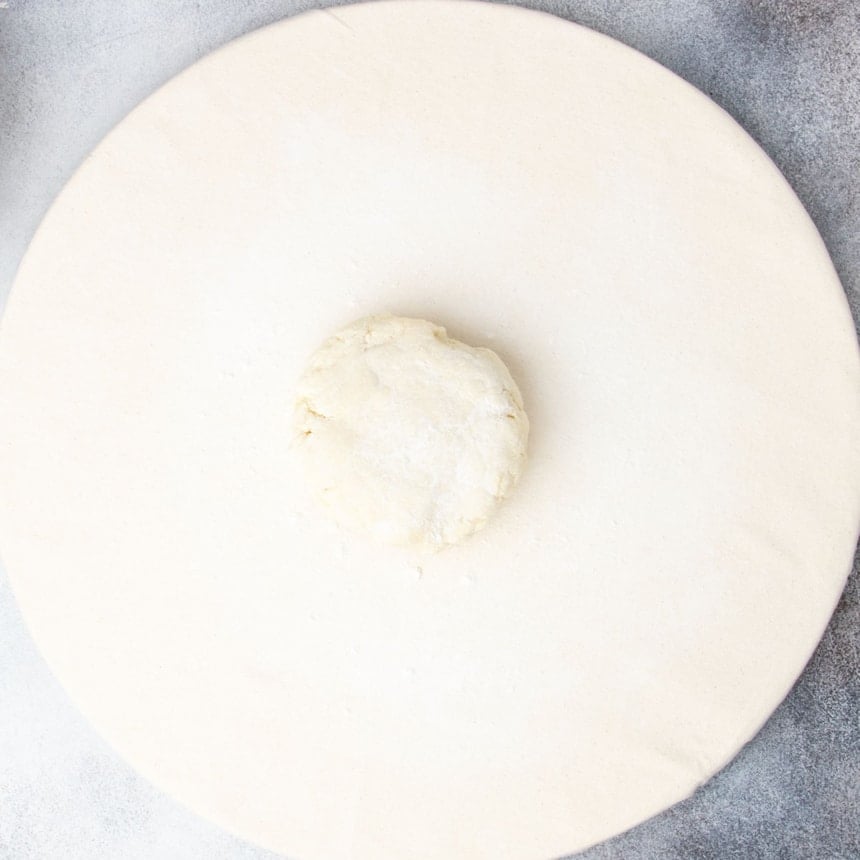
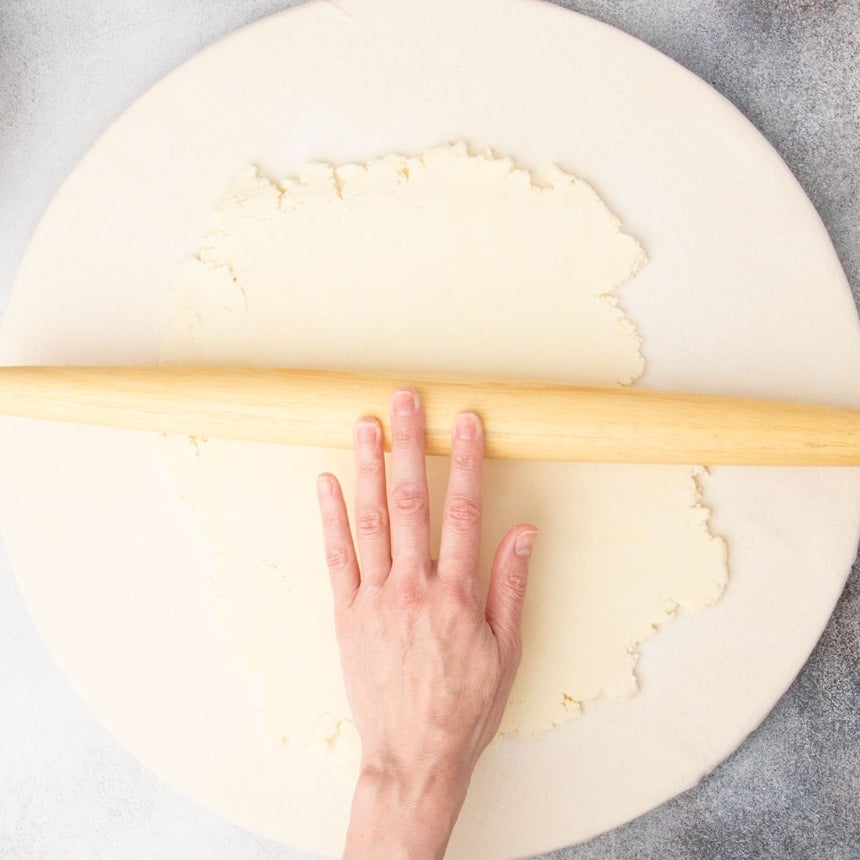
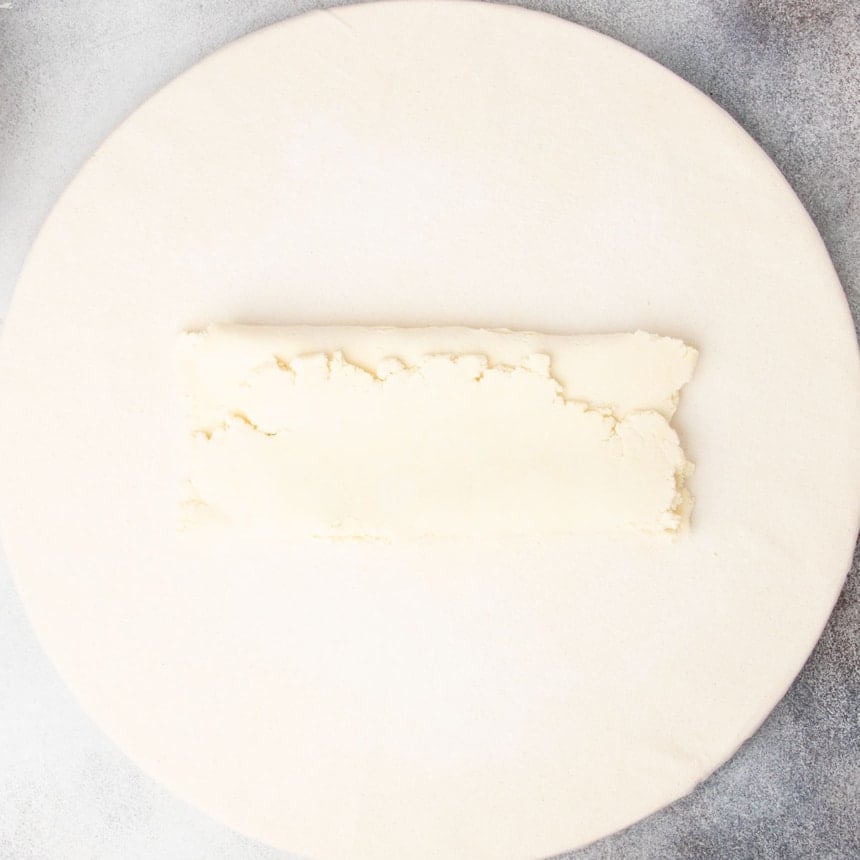
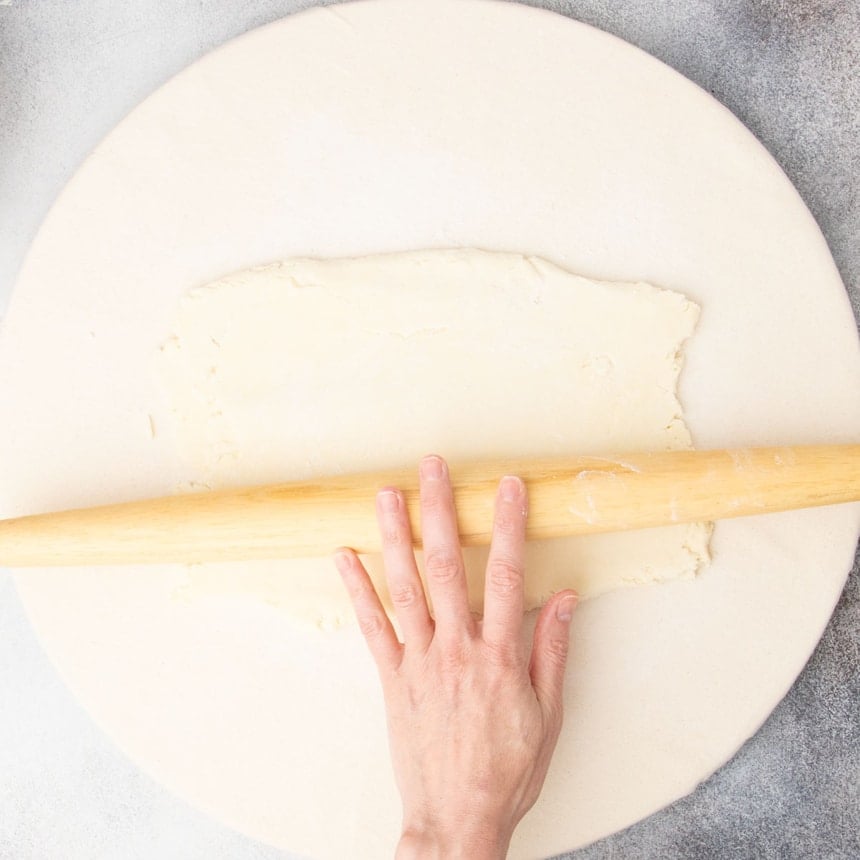
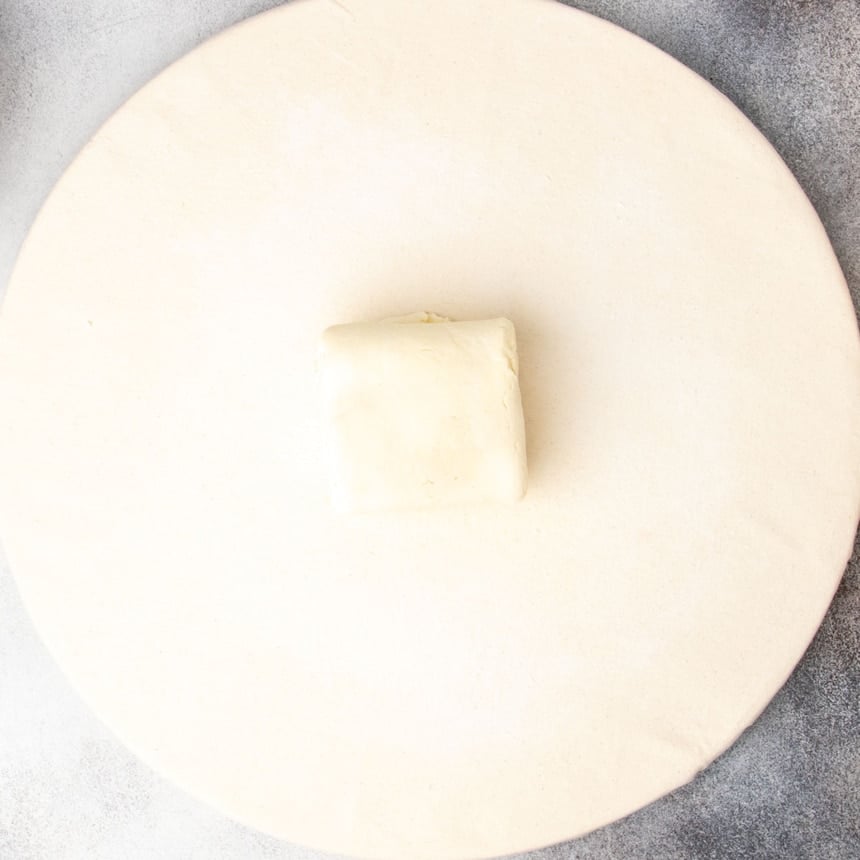
Step 3: Roll and Shape the Crust
Roll the dough into an 11-inch circle, about 3/8-inch thick. Loosely roll it onto a floured rolling pin and unroll it over your greased pie plate.
Gently lift the edges to allow the dough to settle into the corners of the plate—don’t stretch. Tuck the overhanging edge under itself and crimp as desired.
Chill the shaped crust in the fridge, covered, for at least 30 minutes (and up to 3 days).
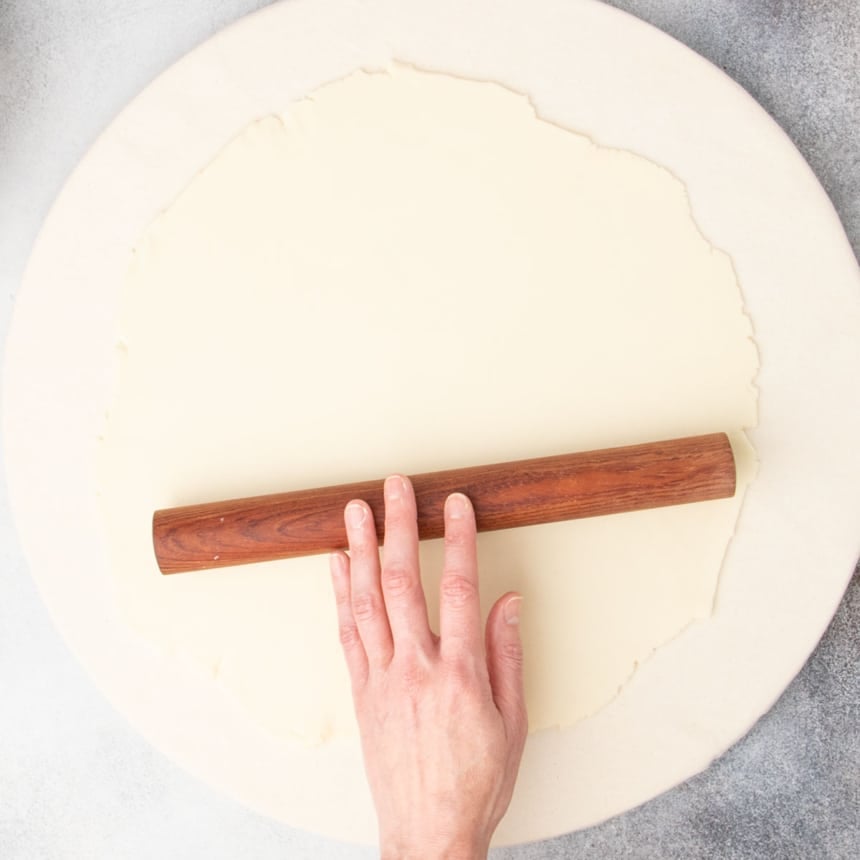
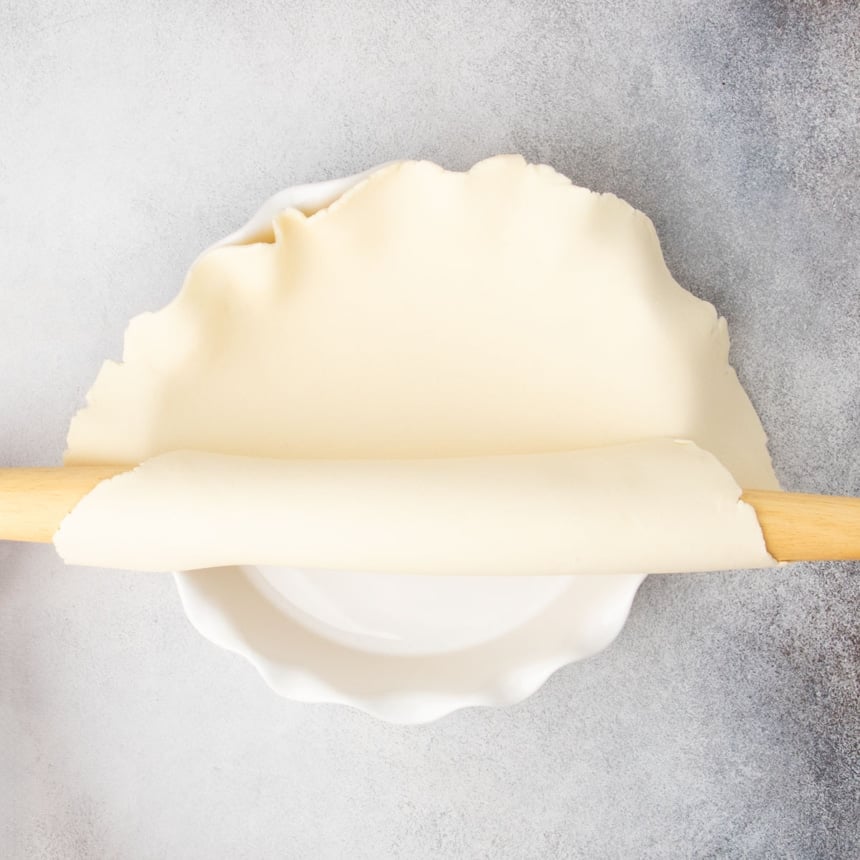
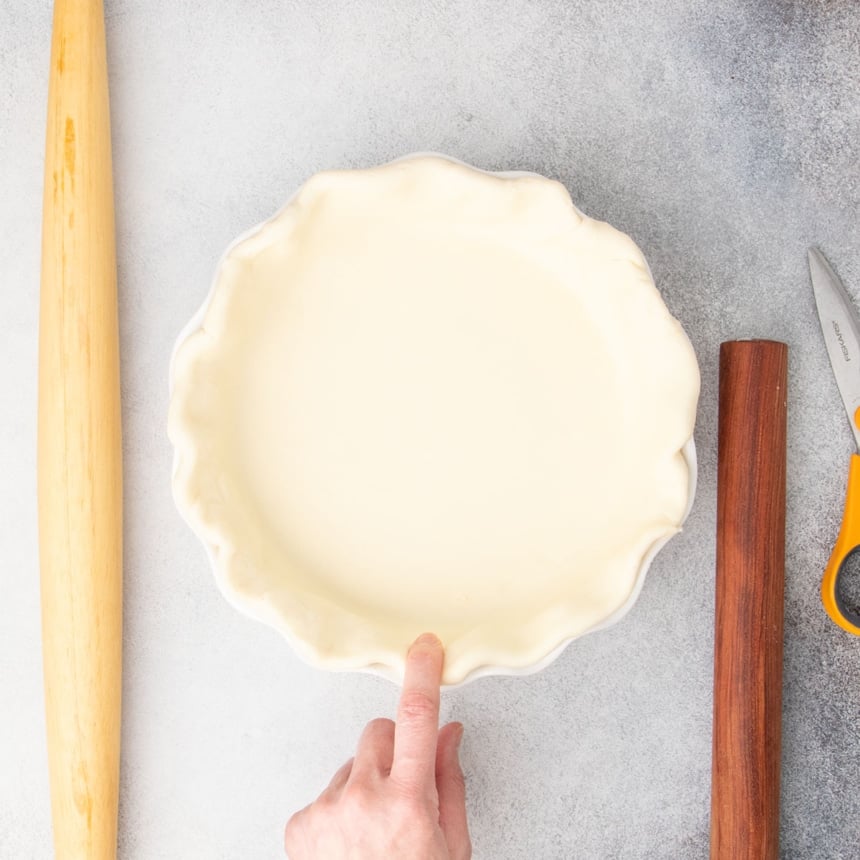
Step 4: Parbake the Crust (if needed)
Preheat the oven to 375°F. Remove the chilled crust from the fridge, pierce the bottom all over with a fork, and line with parchment. Fill with pie weights or dried beans.
Bake for 10 minutes, then remove the weights and parchment. If the crust still looks shiny, brush the bottom with egg white and return to the oven for 2–4 more minutes. Let cool before filling.
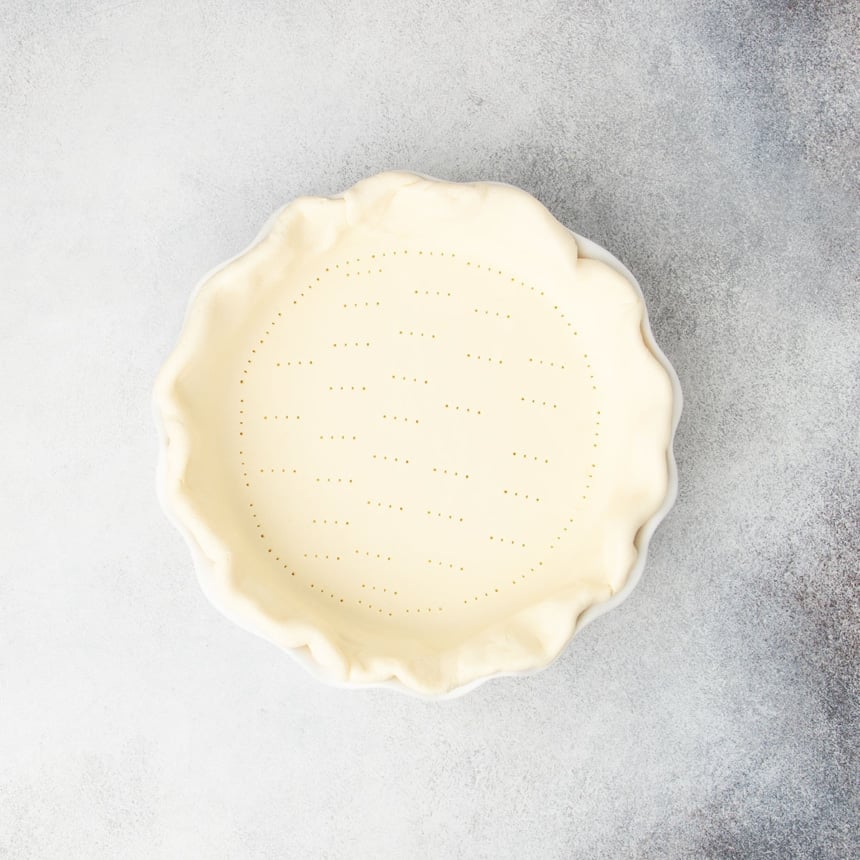
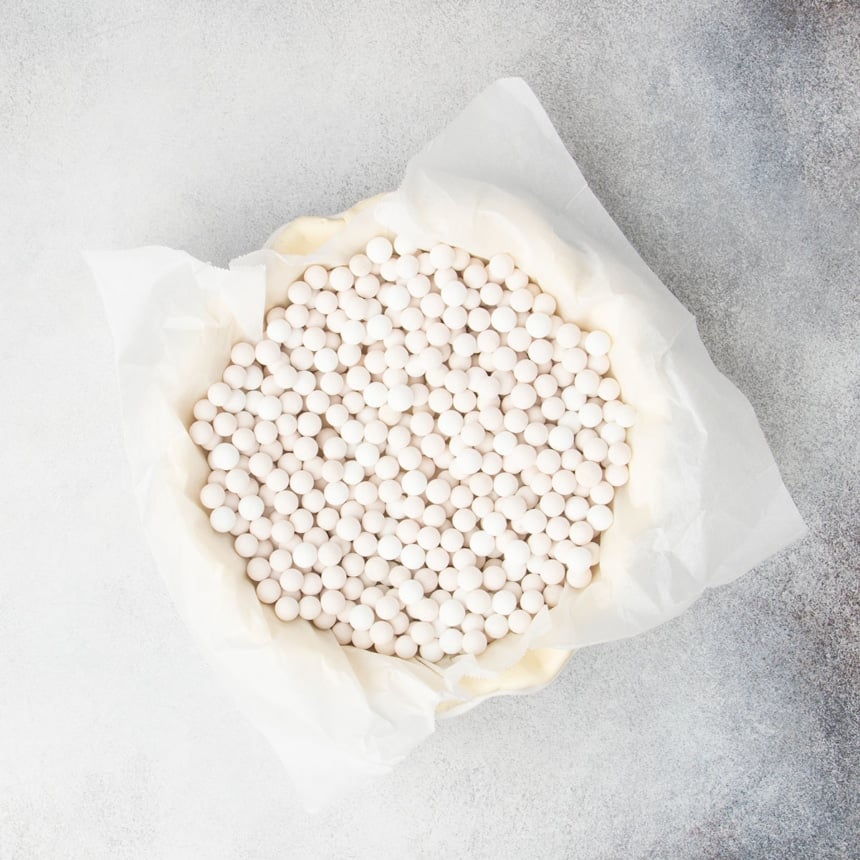
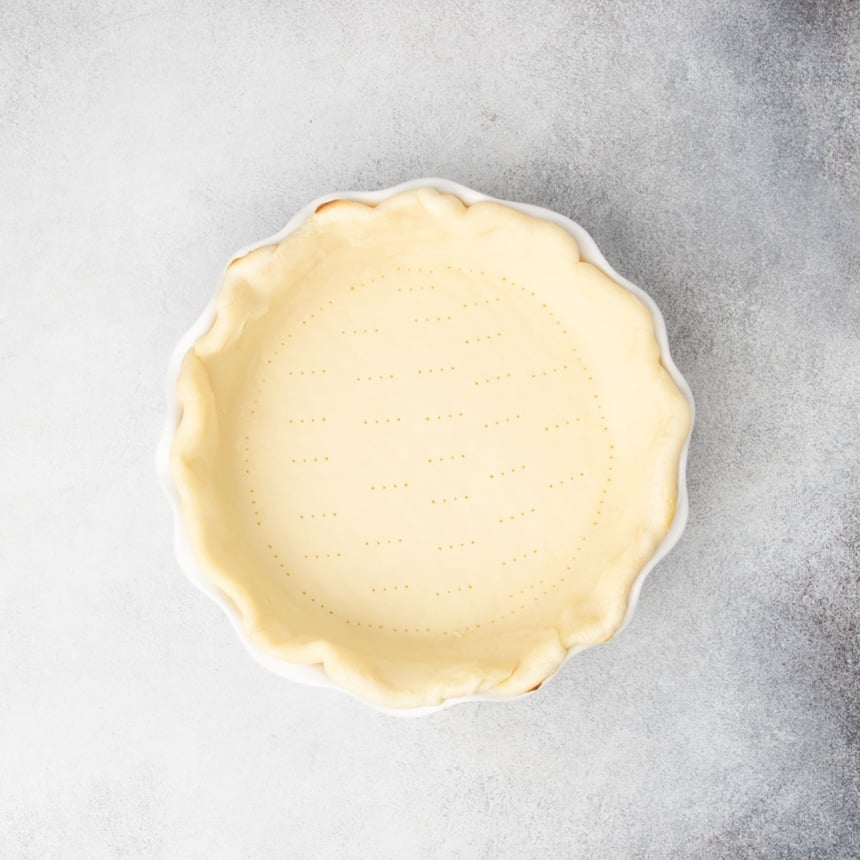
Expert tips for the flakiest pie crust
Keep the butter big and flat
Forget “pea-sized pieces.” For real flakiness, keep your butter in large, flat shards throughout the dough. They’ll create light, layered pockets as they melt during baking—like gluten free puff pastry.
Mix by hand
Use a bowl and spoon to keep control over butter size. Food processors and mixers tend to overwork the dough and overheat the butter, making the crust dense.
Chill often
Cold butter is non-negotiable. If your dough softens or the butter starts to melt while working, wrap and chill again before continuing.
Don't stretch the dough
When fitting the crust into the pie plate, gently lift and lower it into place. Never stretch—it will shrink back in the oven.
Bake smart
- Parbake if your filling will be baked later—10 minutes at 375°F with weights helps avoid sogginess.
- Blind bake for no-bake fillings—after parbaking, bake 10–12 more minutes until golden all over.
- Optional: Brush the crust with egg white before the second bake for extra moisture protection.
Crimp with confidence
To crimp, use your thumb and forefinger on one hand and the knuckle of your other forefinger to press from the outside in. It’s simple, fast, and looks polished.
Go dairy free
Replace butter with half shortening and half vegan butter (Miyoko’s works well). For sour cream, use nondairy Greek-style yogurt or vegan sour cream. See the recipe notes for a dairy-free version using just water and extra baking powder.
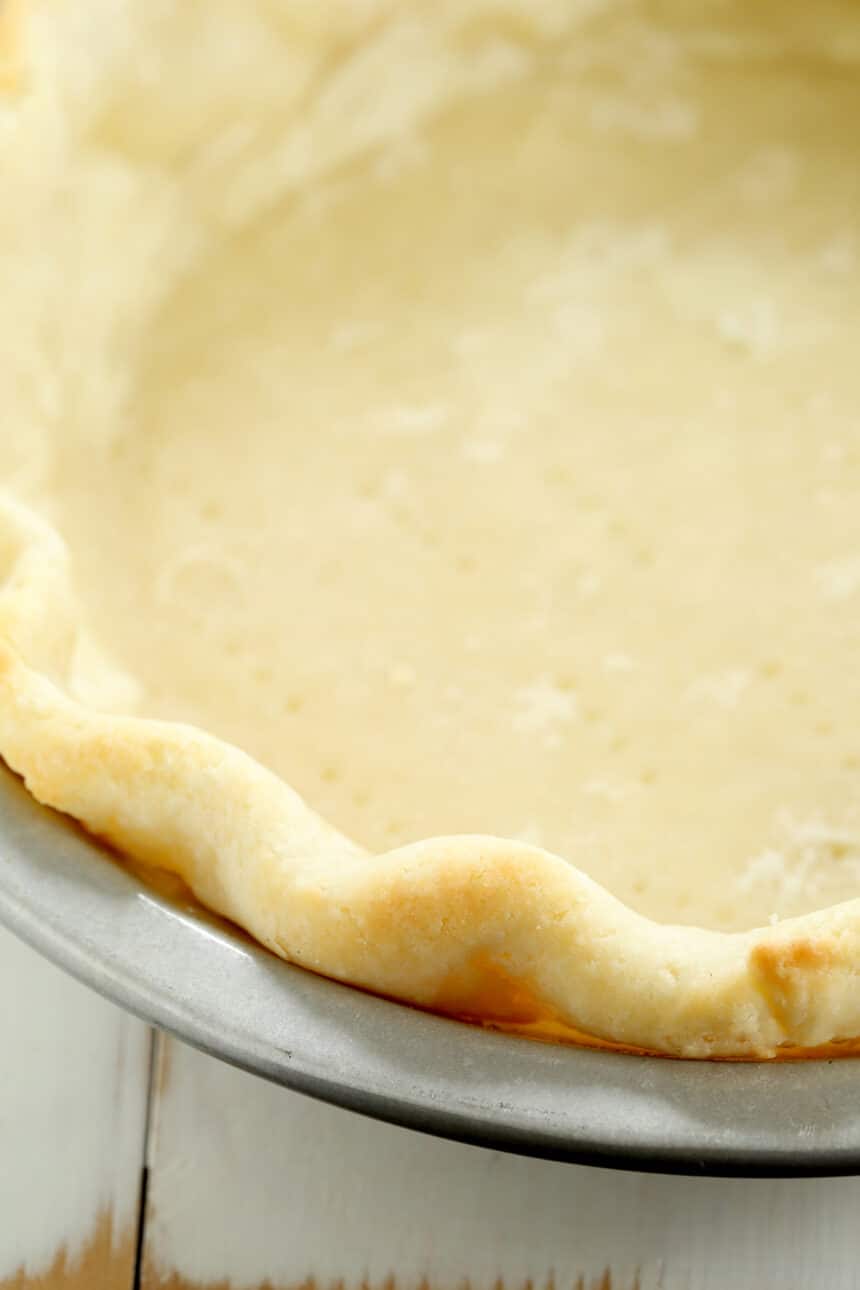
Extra Flaky Gluten Free Pie Crust Recipe
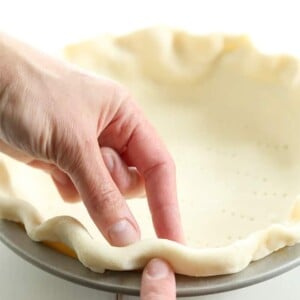
Equipment
- Rolling Pin
- Pie weights
Ingredients
- 1 ½ cups (210 g) all purpose gluten free flour blend, (See Recipe Notes) plus more for sprinkling
- ¾ teaspoon xanthan gum, omit if your blend already contains it (use a heaping 3/4 teaspoon)
- ¼ teaspoon baking powder
- ½ teaspoon kosher salt
- 6 tablespoons (84 g) unsalted butter, roughly chopped and chilled
- ½ cup (120 g) sour cream, full fat, preferably, chilled
- Ice water by the teaspoonful, as necessary
- Egg white, for brushing (optional)
Instructions
Make the pie crust dough
- In a large bowl, place the flour, xanthan gum, baking powder and salt, and whisk to combine well.
- Add the chopped and chilled butter, and toss to coat it in the dry ingredients.
- Flatten each chunk of butter between your thumb and forefinger to make flat shards of butter, coated fully in flour.
- Create a well in the center of the dry ingredients with the butter shards, add the sour cream, and mix to moisten the dry ingredients with the sour cream. The dough should be shaggy and still somewhat crumbly.
- If there are any portions of the dough that are especially dry, try to isolate them in the mixing bowl, drizzle ice water by the teaspoon on only those parts and then mix to moisten them.
- Drizzle in more ice water only as necessary to moisten lightly all of the dry ingredients. Knead the dough together with clean hands until it begins to come together.
- Turn the dough out onto a sheet of plastic wrap, and press into a disk as you close the plastic wrap around the dough. It will still seem rough.
- Place the dough in the refrigerator to chill for 30 minutes.
- Preheat your oven to 375°F. Grease a 9-inch metal pie plate generously and set aside.
Smooth out the chilled dough
- Once the dough has chilled, turn it out onto a lightly floured surface, and sprinkle the top lightly with more flour.
- Roll the dough out into a rough rectangle that is about 1 inch thick, moving the dough frequently and sprinkling it lightly with flour if it begins to stick. Fold the dough over on itself in thirds like you would a business letter.
- Sprinkle the dough again lightly with flour, and roll out the dough once again into a rough rectangle about 1 inch thick. Fold again in thirds.
- Working quickly, sprinkle the dough lightly with flour, and roll out once more into a rough rectangle, for a total of 3 times.
- Fold the dough in thirds again, then fold in the sides to make a square packet of dough. Press the dough together, and try to round the sides into a disk.
- If the dough feels warm at all, or like the butter is melting, cover it with plastic wrap and chill it until the butter is firm again.
Shape the dough in the pie plate
- Roll the dough out into an approximately 11-inch round, about 3/8-inch thick. Roll from the middle to the edges in every direction to help create a round. If the dough splits on the edges, pinch them together.
- Roll the pie crust loosely onto the rolling pin and then unroll it over the prepared pie plate.
- Trim any especially rough edges of the crust with kitchen shears or a sharp knife. Lift up the edges of the pie crust gently to create slack in the crust, and place the crust neatly on the bottom and up the sides of the pie plate.
- Tuck the excess pie crust under itself along the perimeter of the crust, where it overhangs the pie plate. Crimp the edge gently all the way around the crust by pinching the dough at regular intervals with one hand, and creating a crimped impression with the forefinger of the other hand.
- Cover the pie crust with plastic wrap and place it in the refrigerator to chill until firm, at least 30 minutes (and up to 3 days).
Parbake the crust (See Recipe Notes)
- Remove the pie crust from the refrigerator and unwrap and discard the plastic. Pierce the bottom of the pie crust all over with the tines of a fork.
- Place a sheet of parchment paper on top of the raw crust and fill the crust with pie weights or dried beans. Filling the pie crust will help keep the bottom from expanding and the edges from falling down into the pie dish.
- Place the plate in the center of the preheated oven and bake for about 10 minutes, or until the crust is just beginning to turn very lightly golden brown on some edges.
- Remove the pie weights and parchment. The bottom of the crust should be less shiny but not browned. If it's still shiny, brush the bottom of the crust with the optional egg white, and return the pie crust to the oven and bake for another 2 to 4 minutes.
- Allow the parbaked crust to cool before proceeding with your recipe.
Video
Notes
Flour blends
My favorite gluten free flour blends are Better Batter's original blend gluten free flour and Nicole's Best multipurpose blend. Bob's Red Mill 1-to-1 Gluten Free Baking Flour should also work, but you’ll need to add an extra ¾ teaspoon xanthan gum. Cup4Cup changed its formula and doesn't seem to work as well as it has in the past, so I don't recommend it. To make your own blend using one of my “mock” recipes, please see the all purpose gluten free flour blends page. For even more flakiness, try my gluten free pastry flour blend.Dairy free options
- Butter: Use 3 tablespoons shortening + 3 tablespoons vegan block butter (like Miyoko’s).
- Sour Cream: Substitute with nondairy sour cream or Greek-style nondairy yogurt.
- Water-only version: Skip the sour cream and increase baking powder to ½ teaspoon. Start with 3/8 cup (3 fl oz) ice water and add more by the teaspoon as needed.
Parbaking & Blind Baking
- Parbake for baked fillings: Bake with weights at 375°F for 10 minutes.
- Blind bake for no-bake fillings: After parbaking, bake 10–12 more minutes until golden.
- Optional: Brush with egg white before the second bake for extra insurance against sogginess.
Nutrition
Nutrition information is automatically calculated, so should only be used as an approximation.
make ahead/storage tips
Store the Dough Raw
In the fridge: Wrap tightly in plastic and refrigerate for up to 3 days.
In the freezer: Wrap twice (plastic + zip-top bag) and freeze for up to 2 months.
- Thaw overnight in the fridge, then let sit at room temperature for 10 minutes before rolling.
Store a Shaped Crust
Unbaked: Shape the crust in the pan, wrap tightly, and freeze for up to 2 months.
- Bake straight from frozen: add 25°F to the oven temp for the first 10 minutes, then reduce to 375°F.
Store a Parbaked Crust
- Best used the same day you parbake it. If needed, cool completely, wrap tightly, and use within 24 hours.
Frequently Asked Questions
Yes—glass works well and helps you see when the bottom crust is browned. Just keep an eye on it, since glass retains heat and can cause over-baking if left too long.
You can, but it's not ideal. These tools can overmix and melt the butter. If you do use one, use large pieces of cold butter and pulse briefly to avoid losing flakiness.
Simply double the recipe or use the 2[X] option in the recipe card. Divide the dough into two disks, chill, and roll separately.
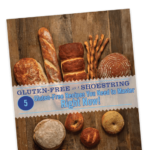
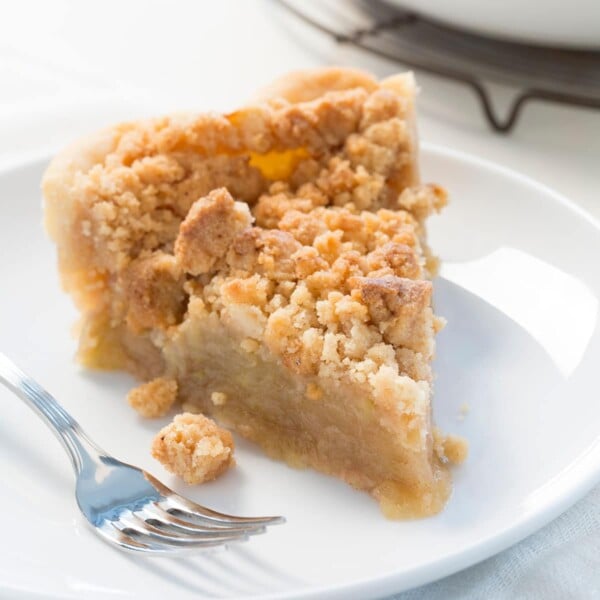
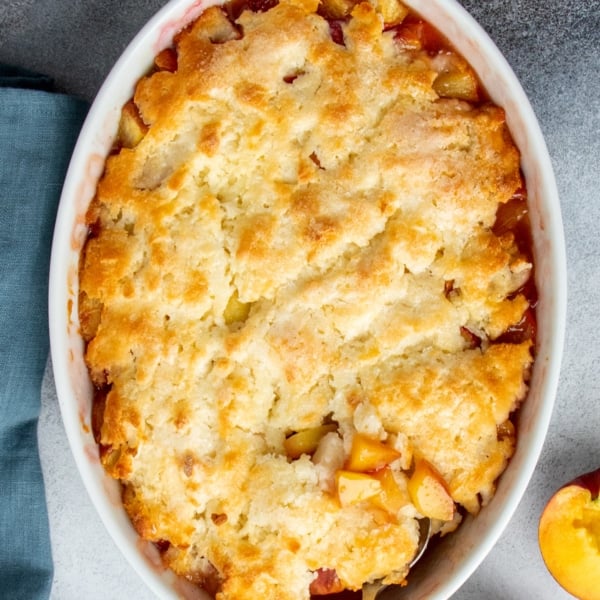
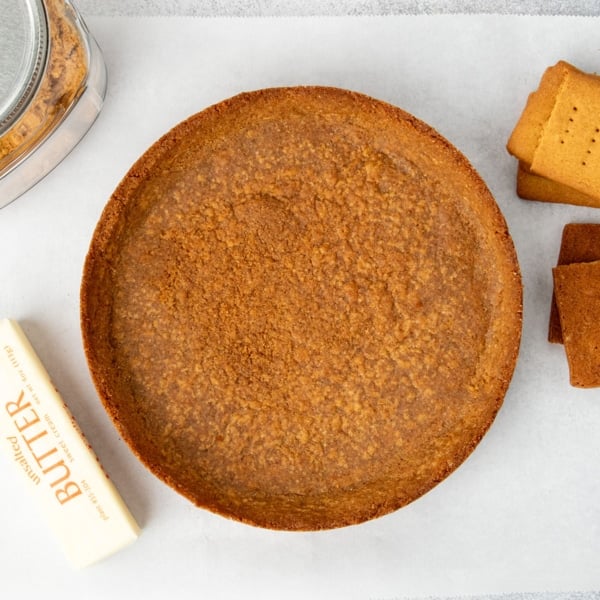
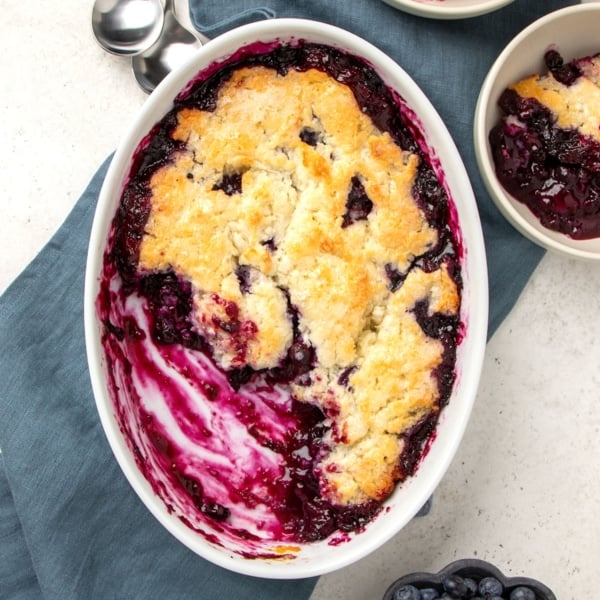









Can I fill with apple pie filling before par-baking or would you recommend par-baking first?
If you’re making someone else’s apple pie recipe, I’d follow that. This is only a crust. If you’d like an apple pie recipe from this blog, please use the search function. I have a few!
Does one need to precook the crust when baking a pecan pie I think my email was wrong on the other commen
If you’re making someone else’s pecan pie recipe, I’d follow that. This is only a crust. If you’d like a pecan pie recipe from this blog, please use the search function.
I can’t find the video you mention that is supposed to be right above the recipe. Am I missing something? Or is there another place I can access it?
If you don’t see a video, your ad blocker is preventing it from running. Advertisements on the blog are the only way I get paid for work that is otherwise free to you.
Does this dough freeze well?
Yes, it does. You’ll have to defrost it gently in the refrigerator before using it, though. Wrap it very tightly or it will dry out.
Thank you, thank you, thank you for this fabulous GF pie crust recipe… it’s magical! I found it super easy to follow, it came together beautifully and fast. I made no changes from your original recipe. I’m excited that my GF pies will now be as good as they use to be with gluten. Thanks for sharing! Judy
You’re very welcome, Judy! I’m so happy that you’re having such a good experience, and that you are feeling so good about your pies!
Does the pie plate have to be metal?
I would avoid a glass pie plate as glass retains too much heat and is much more likely to burn the crust.
Hi Nicole! It’s so nice to have your old tried and true recipes getting so much love this Thanksgiving! I am making this piecrust today so I can serve pumpkin and pecan pies to Linnea. She has moved away from Minnesota to Philadelphia; it is a big deal when she comes home and I can feed her. Thanks for all you continue to do for all of us. Happy Thanksgiving!
Anneke!! It’s so amazing to hear from you! I can’t believe she’s a Philly girl now! Thank you so much for checking in, and love to everyone!!
I’m not sure how you can consider this vegan given there’s butter and sour cream in it. “Vegan” doesn’t just mean “no meat or eggs.”
There are substitution suggestions to make it vegan, but nowhere does it say that this is a vegan recipe in the first instance. If you’d like to read the text instead of just reacting, you’ll see that.
Fantastic response to snarkiness 😆👍🏼👍🏼
Sometimes, I delete nasty comments. And sometimes, I respond to demonstrate that it’s not appropriate. Thank you for appreciating. :)
Hi, you say there is a video right above the recipe itself, but I don’t see any video link in the whole post. Is it something with my browser? Or did you have to take down the video? Thanks in advance.
There is a video, but you won’t see if it you’re using an ad blocker. Advertisements on this blog are the only way I get paid for the content that is free to you otherwise.
Can I make this with Bobs Red mill Cup4Cup? Thanks!
No, you cannot use Bob’s Red Mill blends in any of my recipes with success. Yes, Cup4Cup is a recommended blend. Please see the all purpose gluten free flour blends page linked in this and every recipe for full information.